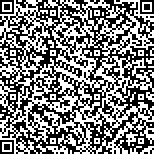下载中心
优秀审稿专家
优秀论文
相关链接
摘要

对于SAR图像线状目标提取来说,线基元提取是一个非常重要的步骤,如何选择最合适的线基元提取方法影响整个算法的成败.本文分析了经典的线基元提取方法,提出了一套线基元提取性能的量化评估标准,并使用这套量化评估准则对各种线基元提取方法进行详尽的量化评估和比较,作为进行目标的提取和识别时选择线基元提取方法的依据.
Since prmi itive line segments extraction is an mi portantprocedure, how to select the proper line segments ex-traction approach is the key to the extraction of linearobjectofSAR mi ages. This paper firstbriefly reviews three existing methods: Radon technique, the Burns line detector, the line detector based on templatematching. In the Radon Trans-form methods the transform is applied to each sets of the connected pixels, the relativemaxmi um in the transform corre-sponds to possible lines in the binary mi age. In order to reduce inter-edge influence, afterextracting the possible prmi itive line segment, only the line associatedwith themaxmi um Radon coefficient is inspected ateach iteration instead ofcontinu-ing and proceedingwith the next relativemaxmi um. This process is recursively repeated until themaxmi um Radon coeffi-cient reaches aminmi um value. In Burns line detectionmethod, edge pixels are firstdetermined by convolutionwith two smi ple 2×2 masks. The pixels are grouped into line-support regions of smi ilargradientorientation. The intensity surface associatedwith each line-support region is approxmi ated by a planar surface. Straight lines are extracted by intersecting this fitted planewith a horizontalplane representing the average intensity of the regionweighted by a localgradientmagni-tude. In themethod based on templatematching, each edge pixel is given a line label based on certain templates in the first step. The resultof this step is thatedge pixels that lie on the same line get the same line labe.l Furthermore, corre-sponding to each line labe,l a complete description of the line is obtained. In the second step, these lines are further linked based on certain criteria.While an extensive literature exists on the problem ofPL extraction, mostof the researches only give qualitative anal-ysis of the behaviorofPL extraction, made by a visual comparison ofdifferentresults. To provide a solution, in thispaper we propose a setofquantitative evaluationmetrics to determine howmany lines are correctly extracted. The basic idea is to compare the extracted PLswith the lines in the ground truth data, thus the performance of the PL extraction can be showed through a series ofperformancemetrics. We consider in this paper three categories ofperformancemetrics, name-ly, a) pixel-based metrics, which are composed of completeness, correctness, quality, and ROC curve; b) line-based metrics, which are composed of the percentage of the extracted lines andmean numberofPLs per line,c) computational complexity. To correctly compute these quantities, we firstneed to definewhen a linemaybe considered as extracted, and thenmanually extract the start and end points of the center line of each line in the test mi age as a reference.In summary, the paper studies approaches ofprmi itive line segments extraction, presents a series ofquantitative per-formance evaluationmeasures and evaluates these threemethods. The proper line segments extraction approach for linear object extraction can be selected based on the evaluation results.

